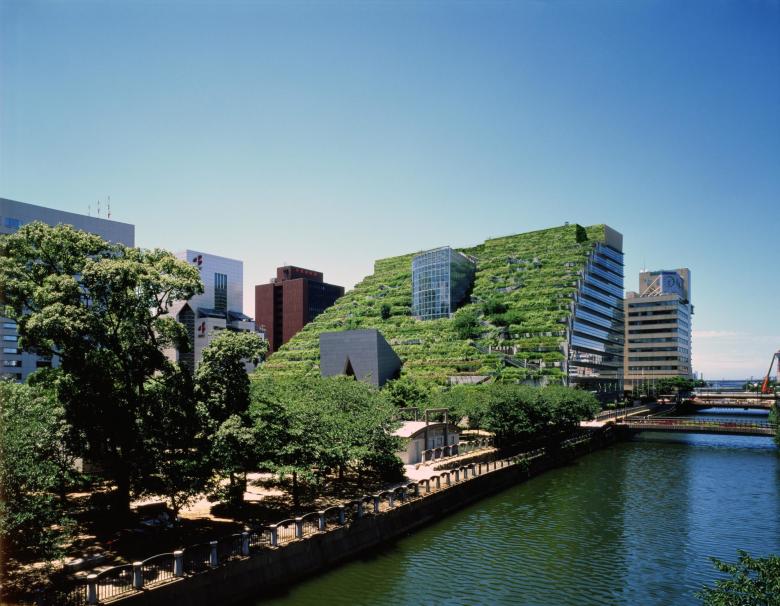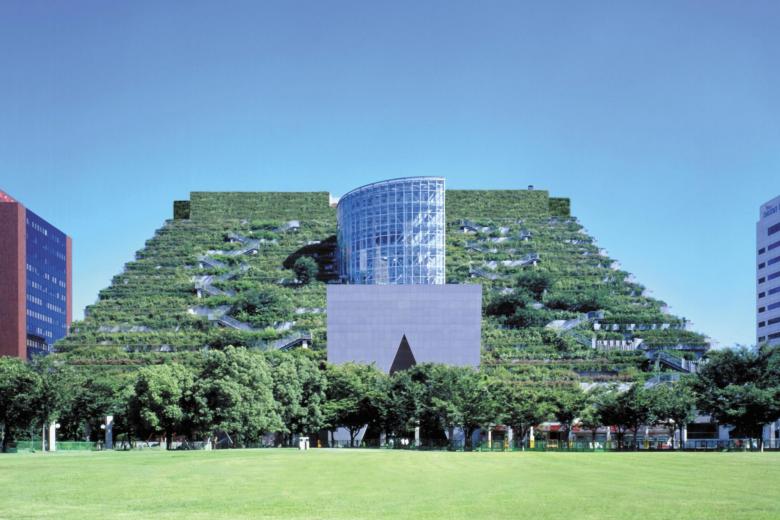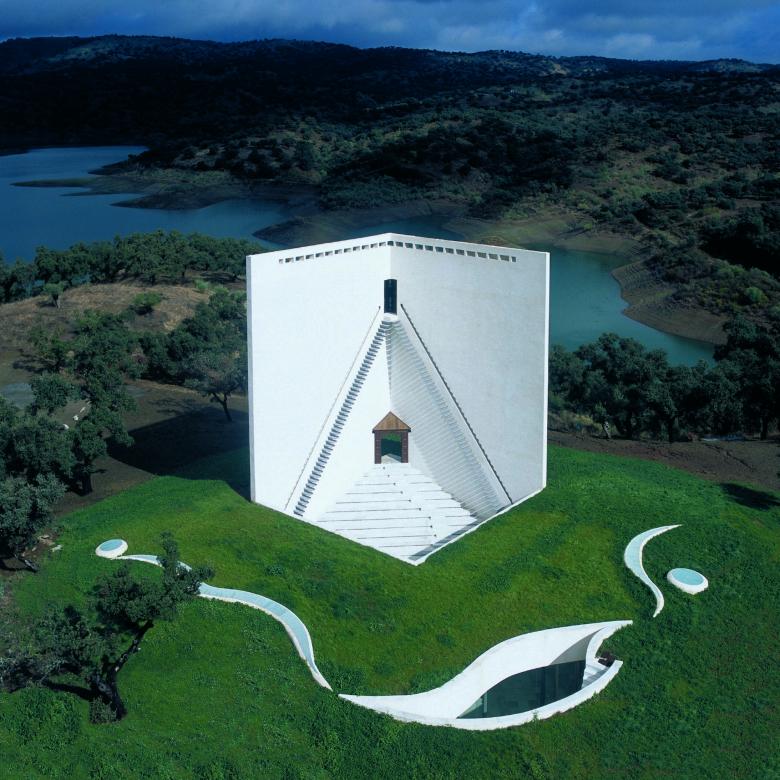A New Leaf at MoMA
John Hill
20. November 2020
Emilio Ambasz. ACROS Fukuoka, Fukuoka City, Japan, 1990. (Photo: I. Watanabe)
The Museum of Modern Art (MoMA) in New York City has announced the establishment of the Emilio Ambasz Institute for the Joint Study of the Built and the Natural Environment, enabled by a gift from the Legacy Emilio Ambasz Foundation (LEAF).
James Wines, the founder of New York's SITE and author of the 2000 book Green Architecture, called Argentina-born architect Emilio Ambasz "the Messiah of Green Architecture." The most famous of Ambasz's built works, ACROS Fukuoka, might alone have garnered him that platitude. Thirty years old now, the terraced government office building was built upon a portion of an existing park, which led Ambasz to continue the green space up the building's publicly accessible south facade. It is an icon of green architecture that looks greener every year and no doubt influenced recent buildings covered in vegetation.
Emilio Ambasz. ACROS Fukuoka, Fukuoka City, Japan, 1990. (Photo: I. Watanabe)
The Ambasz Institute, which will be housed in MoMA's Department of Architecture and Design in Midtown Manhattan, will focus on the relationship between the built and the natural environment, "making the interaction between architecture and ecology visible and accessible to [MoMA] visitors and the wider public while highlighting the urgent need for an ecological recalibration," per a press release from MoMA. Its initiatives would consist of "research opportunities and a variety of programs including public lectures, conferences and symposia, many of them online." The Institute is currently searching for a director.
Emilio Ambasz. Casa de Retiro Espiritual, Córdoba, Spain, 1979. (Photo: M. Alassio)
A quote from Ambasz in MoMA's press release works well in summarizing the 77-year-old architect's position on the relationship between architecture and nature, perhaps signaling the course of the institute that bears his name:
"The Western notion of Man's creations as distinct and separate entities — in contrast with Nature — has exhausted its intellectual and ethical capital. An emerging man-made garden is overtaking the one we were originally given. We need to conceive of an architecture that stands as the embodiment of a pact of reconciliation between nature and building. We must create alternative models of the future proposing a better life to guide our actions if we do not wish to perpetuate present conditions. I believe that any architectural project not attempting to propose better modes of existence is unethical. This task may stagger the imagination and paralyze hope, but we cannot subtract ourselves from its pursuit."
Emilio Ambasz (Photo: Wade Zimmerman)
LEAF's establishment of the Emilio Ambasz Institute for the Joint Study of the Built and the Natural Environment at MoMA is a logical choice, given that he was Curator of Design in the Department of Architecture and Design from 1969 to 1976. In those years he organized exhibitions that are referenced to this day, most notably Italy: The New Domestic Landscape (1972) and The Architecture of Luis Barragan (1974). MoMA has 24 objects by Ambasz in their collection, including chairs he has designed and drawings and models for Casa de Retiro Espiritual, the striking underground house outside of Seville that is capped by two walls in the form of an open book.
Related articles
-
Environmental Architecture on Display
on 9/21/23
-
On James Wines
on 4/27/22
-
A New Leaf at MoMA
on 11/20/20



